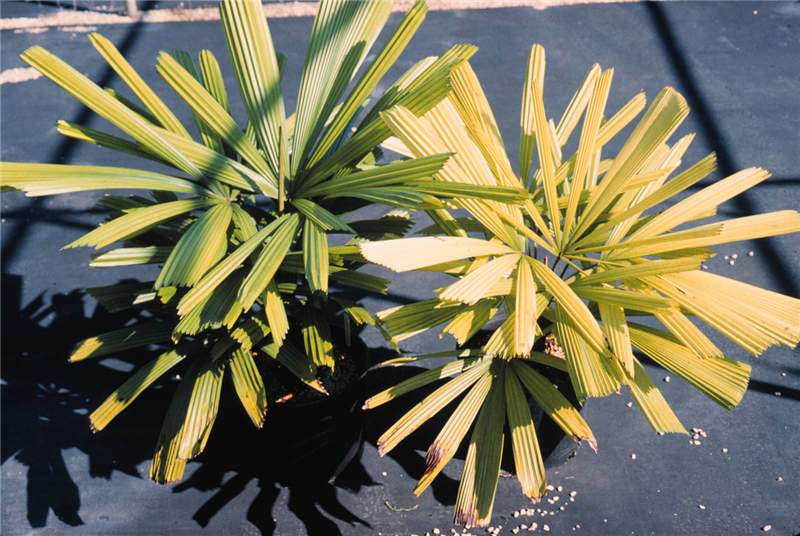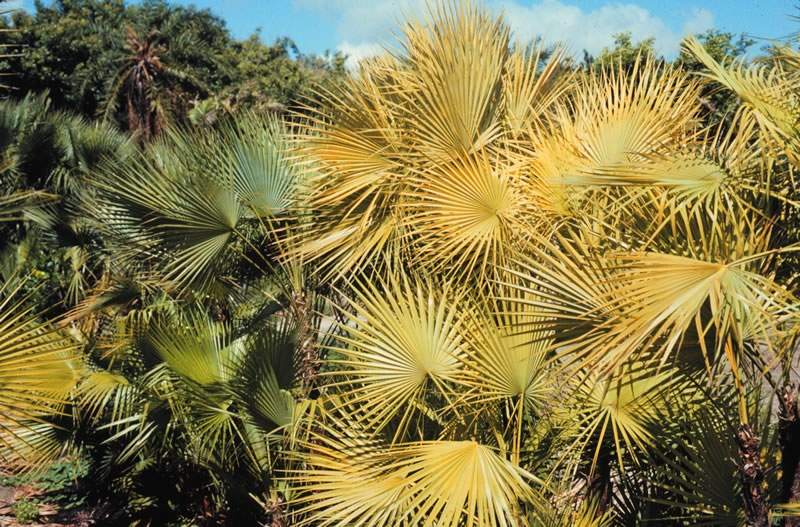Root Suffocation
|
Figure 1. Iron deficiency symptoms caused by root suffocation in Licuala spinosa. Photo by T.K. Broschat
|
|
Figure 2. Iron deficiency caused by deep planting in Acoelorrhaphe wrightii. Photo by T.K. Broschat
|
Symptoms
Early symptoms of root suffocation are often those of iron (Fe) deficiency, with chloroticchlorotic:
see chlorosis
new leaves being produced (Fig. 1). In severe cases, wilting and desiccation of the foliage and shrinkage of the trunk may occur. Roots may appear rotted.
May be confused with
Since Fe deficiency is often the result of root suffocation, the root system of Fe deficient palms should be examined to see if this is the cause of the chlorosischlorosis:
a loss of chlorophyll resulting in white, yellow, or orange leaf color
. The wilting symptoms characteristic of this problem are also characteristic of diseases such as Ganoderma butt rot, Fusarium wilt, lethal yellowing, etc.
Cause
Planting palms more deeply than they were originally growing decreases oxygen levels in the soil and can cause root suffocation. This can lead to eventual death of the root system and of the entire palm. Waterlogged soils also reduce soil aeration with similar effects on palm roots.
Occurrence
Palms in poorly-drained landscape or field sites, or in poorly-drained container substrates often suffer from this problem. Palms planted too deeply are also susceptible to this problem.
Additional comments
Visual symptoms are usually adequate for diagnosis of this problem. Look for iron or manganese deficiency symptoms, wilting, shriveling of the trunk, or excessive water in the root zone. Dig down to determine if the palm was planted too deeply.




